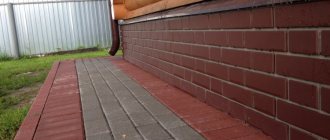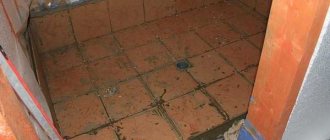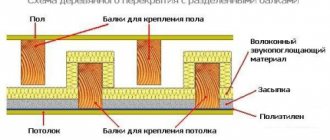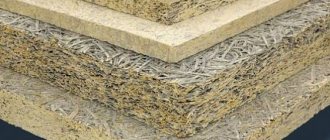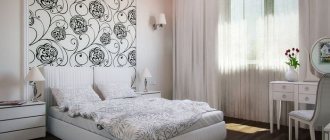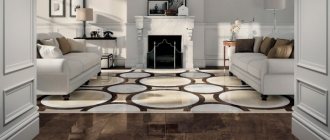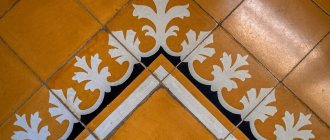How is clinker used in apartment design?
Of the variety of clinkers for finishing an apartment, most often they choose brick-like facade clinker tiles. It is used to decorate doorways, walls in the kitchen, and line fireplaces.
Hand-molded clinker looks most interesting in the interior - it has a pronounced texture and does not create a feeling of monotony due to the uniqueness of each tile.
In the photo: finishing the wall with hand-molded rough clinker.
Clinker steps are used less frequently in interiors - recently they have been replaced by special elements included in collections of porcelain stoneware floor tiles.
Clinker facing bricks, unlike flat brick-like tiles, are voluminous and suitable for laying out decorative partitions, arches or bar counters.
In the photo: an arch made of decorative brick.
Advantages and disadvantages
Clinker wall tiles have many advantages. A product that imitates brick is often impossible to distinguish from the real material . Clinker samples look good in the interior of residential premises. With decorative products, you can decorate the brickwork in such a way that it will look perfect even next to a smooth wall painted in light shades.
The main advantages of clinker material:
- High strength. This material is difficult to break or damage, so it is of high quality and has a long service life.
- Wear resistance. The tiles do not wear out or wear out. It does not lose its original appearance for a long time.
- Moisture resistance. The low degree of water absorption makes clinker a suitable material for cladding walls in the bathroom, kitchen and other rooms with high humidity levels.
- Resistant to temperature changes. Clinker products can withstand high and low temperatures, so they are often used for cladding the facade of a house.
- Fire resistance. Clinker is a non-flammable material, and when exposed to flame or high temperatures, the material will not emit substances harmful to humans.
- Resistance to chemical influences. The tile is not afraid of chemicals and various contaminants, as it does not absorb them.
- Antistatic properties. Clinker does not conduct electrostatic charge.
- UV resistance. A clinker product is not exposed to sunlight, which cannot be said about many other types of facing materials.
- Flexibility. Although the clinker material is quite durable, it also bends well, which is a big advantage during its installation.
- Environmentally friendly. Since natural raw materials are used to make clinker, being in rooms with such cladding does not pose any danger.
- High degree of decorativeness. To create a neat and sophisticated interior, you can always find a suitable tile design. Any variation looks attractive, and with the various shapes of the product you can create an interesting wall design.
- Easy care. To clean clinker products, no special products or tools are required. Cleaning the walls is not difficult, given that such cladding rarely gets dirty and hardly accumulates dust.
The finishing material has only a few disadvantages. Since clinker products are distinguished by high strength, wear resistance and other qualities, their cost is significantly high. Not every buyer can afford continuous wall decoration with such material. It is also worth noting the fragility of tiles made from ceramics. This nuance must be taken into account during installation.
Popular solutions for using clinker in the interior
There are several standard solutions for interior finishing using clinker and facade tiles.
In the photo: decorating a doorway with clinker.
In the photo: a plinth made of hand-molded brick-like clinker.
In the photo: imitation of a brick wall using facade tiles.
In the photo: clinker cladding of the fireplace.
In the photo: interior elements made of facade decorative bricks.
Wall cladding options
Clinker tiles will significantly reduce the cost of purchasing real bricks. With various types of products, you can create an individual look for the interior that will not be visually overloaded. With thin tiles, you can save extra space, which cannot be said about finishing with real material.
Clinker tiles are installed on completely cleaned and leveled walls. The surfaces are first washed, dried and treated with a special protective compound. Sometimes the product is used as a decorative tile, which is used to cover the base building materials used to make walls. Clinker samples look natural and have virtually no visual difference from real brickwork.
Tiles imitating brick can be laid in several ways:
- Spoon. This layout is done with uneven edges and staggered. The cladding method is often used for interior decoration of walls, which look extraordinary and impressive. “Brick” rows are made along a horizontal or vertical line; sometimes these methods are combined. The vertical layout of clinker products is rarely used due to noticeable tile waste, but it looks more interesting than the horizontal one.
- Chain. In this case, the material is laid in pairs in blocks, which are then installed vertically or horizontally. A non-standard solution completes the finishing succinctly.
- "Fish bone" In an unusual arrangement, each subsequent tile is mounted perpendicular to the previous one. The finish has uneven edges, but this only gives the interior a special originality.
- Interlocking tiles. This method is rarely used in home wall cladding, since the tiles must be of different sizes to achieve the desired effect. With perpendicular laying, gaps are formed between the elements into which smaller samples are placed. If desired, these areas can be filled with fine gravel. Some leave the inclusions empty. It is worth noting that interlacing technology is not suitable for rooms with high humidity levels.
The necessary clinker tiles can be purchased at any hardware store or ordered online. You should definitely pay attention to the manufacturer, because materials manufactured by different companies differ not only in design and structure. Low-quality samples may have low strength and moisture permeability, which makes them impossible to use in areas such as a kitchen, bathroom or hallway. Many positive reviews can be found about German manufacturers who produce clinker products of excellent quality in a wide range.
Consider Alternatives
Just a couple of years ago, clinker tiles were the only material that reliably imitated brickwork or natural stone. Today, porcelain stoneware, stylized as brick or stone, is increasingly used as a replacement for clinker for finishing apartments.
Pictured: Cir & Serenissima Chicago porcelain tiles.
How to choose in which cases clinker is suitable, and in which - porcelain stoneware?
The main differences between clinker and porcelain stoneware are heat resistance, thickness and special rough texture. Therefore, façade clinker tiles should be chosen for interior decoration in two cases:
- if you need to achieve the most realistic brickwork effect
- if you are decorating a fireplace.
In other cases, it is better to prefer porcelain stoneware “brick-like” or “stone-like”. Why? There are several reasons:
- Porcelain tile is thinner and lighter - it does not “eat up” useful space.
- Wider selection of shapes, textures and decorative elements.
- Porcelain tiles are easier to cut for lining niches, openings and small architectural details.
In the photo: brick-look porcelain tiles from Cir & Serenissima New York.
A wide selection of porcelain stoneware stylized as wild stone, brick or paving stones can be found in the assortment of the following factories:
- Cir & Serenissima,
- Del Conca,
- Natucer,
- Gres de Aragon,
- Cifre.
Installation of clinker tiles
Installation of clinker tiles on crosses is carried out when the seam is small
To complete the job you will need the following tool:
- laser or water level;
- smooth spatula;
- notched spatula;
- rubber hammer;
- tile cutter;
- grinder with diamond blade;
- diamond crown;
- crosses or other material with which the required row gap will be set.
Lay a brick wall on glazing beads in cases where you need to achieve the effect of brickwork
First, markings are applied to the walls using an existing level, and the tiles will be laid along them. For ease of installation, a CD profile can be mounted on the wall as a support for the first row of cladding material.
A thin layer of adhesive is applied to the wall. The tiles are also coated with a solution that literally needs to be pressed into it. After this, the solution is added, leveled with a comb spatula on the tile, and now it can be glued to the wall, leveled and tapped with a rubber hammer. This is how the entire row is glued. After that, the rule is to check how even the top edge is and, if necessary, trim it. Approximately in the middle, you need to draw a vertical line from the seam, which will be a guide for each odd row - the joint of the tiles will pass along it. The next day you can grout the joints.
As you can see, wall cladding with clinker tiles can easily be done by a non-specialist.
Consult with experts
When choosing clinker for the kitchen, living room or fireplace, consult with the specialists of the Art Real salon. Our managers will introduce you to the range of clinker tiles available and to order, and our designers will offer interesting options for decorating your interior.
Tags: Feldhaus klinker , ADW klinker , Gres de aragon , Tiles , Indoors , For walls , For floors , For kitchens , Porcelain tiles , Stone-like , Decor , Cir & Serenissima , Clinker , Provence , Del Conca , Exagres , English style , Natucer , Brick , Klinker Sire , Cifre , Loft , Rough , Country , Steps , Facade tiles , facing brick , Cir & Serenissima New York , Shabby chic , Cir & Serenissima Chicago
